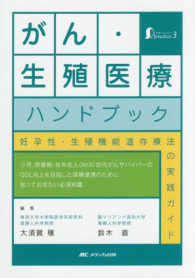Full Description
Attachment theory is a framework for understanding human behaviour that helps us identify the nature and source of an individual or group's responses to anxiety, change, threat or danger, and can be used across a range of therapeutic interventions. Integrated within the first edition of Attachment-based Practice with Adults but bound and sold separately for the second edition The Interviewing Guide lets readers see how the three core attachment strategies - distancing ('A'), preoccupied ('C') and balanced ('B'), influenced by procedural, sensory, semantic, episodic and integrative memory systems - are typically expressed in verbal and non-verbal communication. Reproducible discourse marker sheets allow readers to keep a log of interviews so as to become more familiar with patterns of discourse and their underlying functions.
Contents
Introduction
Memory systems
• Procedural Memory
• Imaged/sensory memory
• Semantic memory
• Episodic memory
• Integrative/working memory
Attachment strategies - A, B and C
Discourse marking sheets
The Interviewing Guide
• Type A (distancing) strategy
• Type C (preoccupied) strategy
• Type B (balanced) strategy





